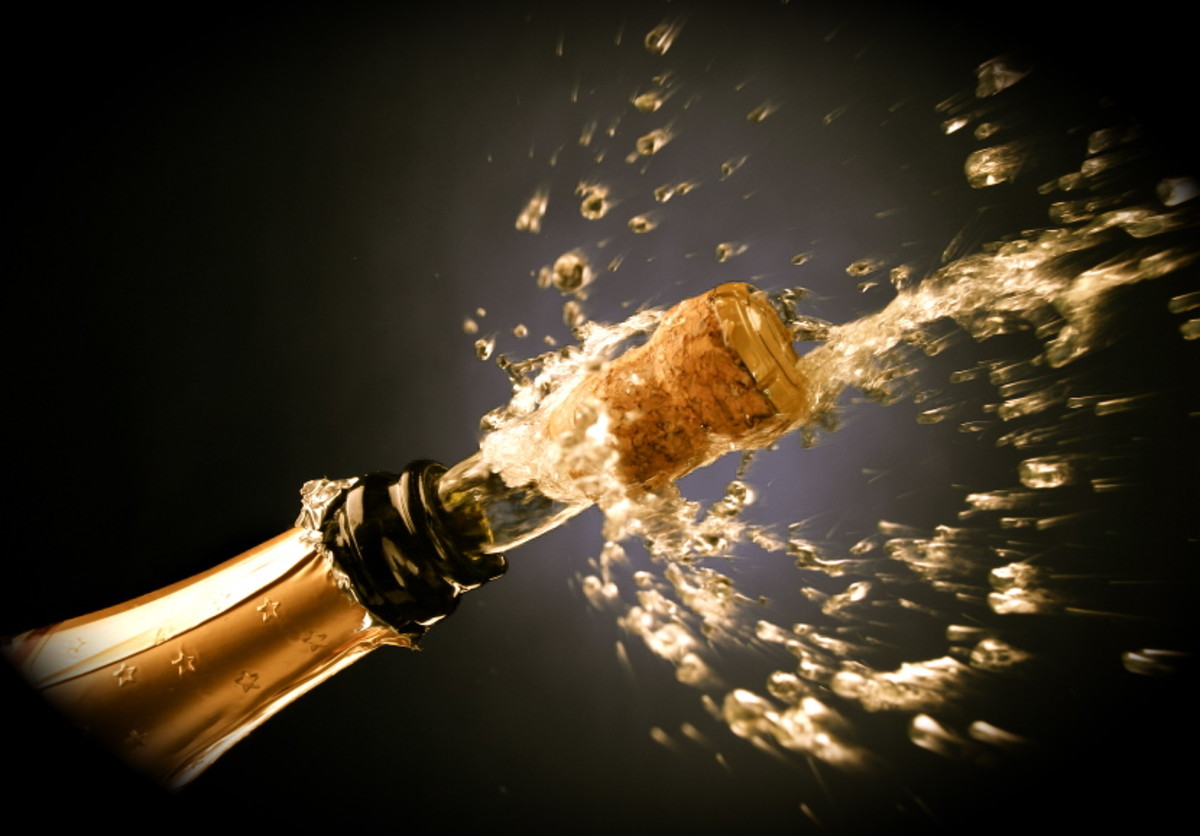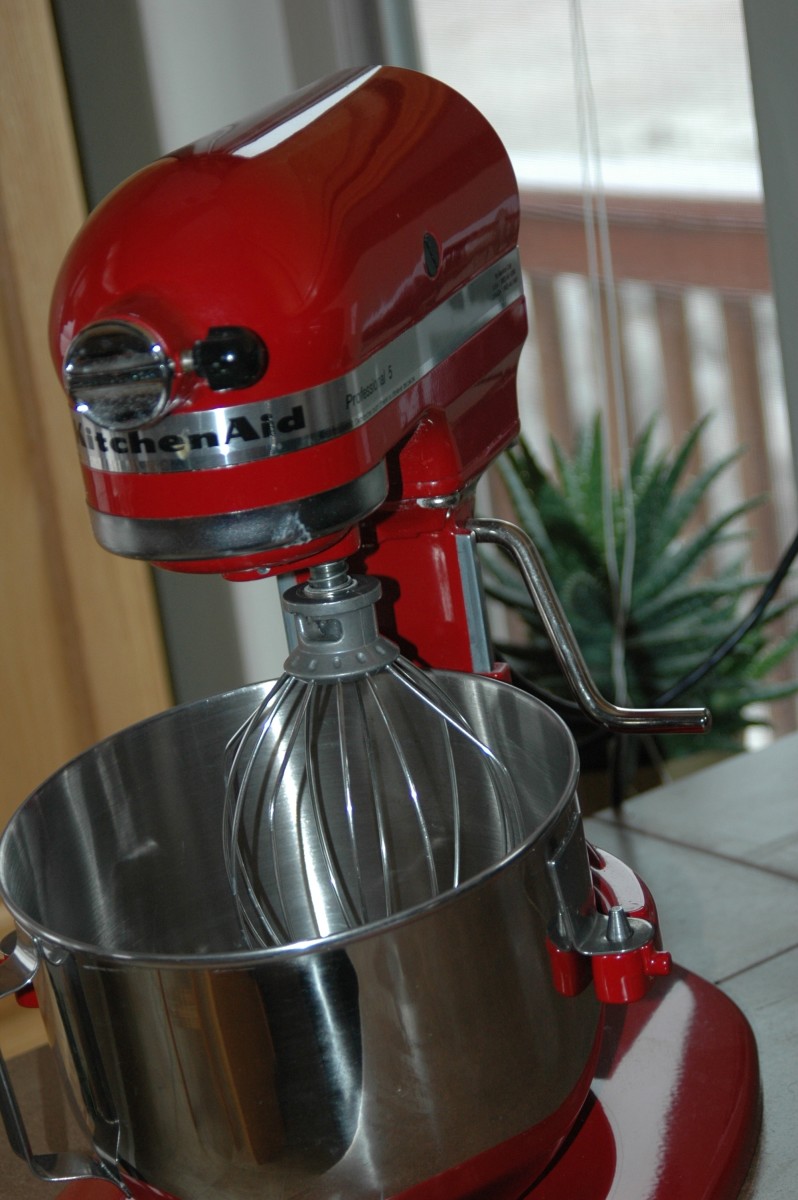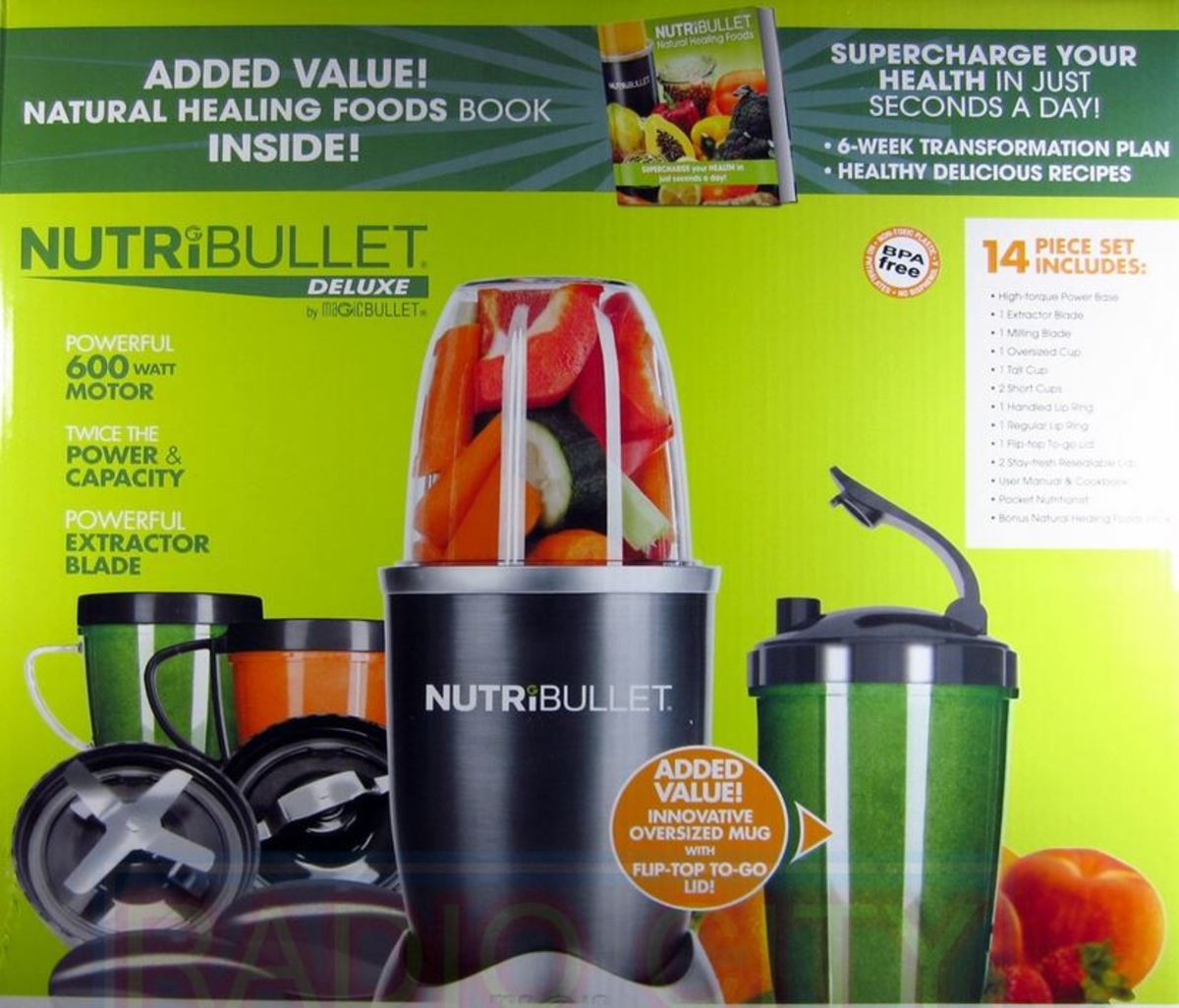How To Stock A Bar At Home

Don't Be Shaken Or Stirred
Humans are social creatures. Cocktail culture has made a comeback. There are thousands of bars serving fancy mixed drinks. Every few months there is a new hot cocktail everyone is drinking. Sometimes there is nothing better than having a few friends in for drinks. Having a well stocked bar will insure that you will be able to serve your guests what they want whether it is a beer or a Singapore Sling.
This lens will show you everything you need to stock your bar at home. With a well stocked bar you will be ready to entertain whenever you want without having to run to the store to make your guest's favourite drinks.

Alcohol: The Bare Essentials
You can get by on these items and plenty of mixers
2 bottles of red wine
2 bottles of white wine
2 bottles of sparkling wine or Champagne
1 bottle of vodka
1 bottle of rye
1 bottle of rum
1 bottle of gin
1 bottle of scotch
1 bottle of tequila or bourbon
1 case of beer
1 bottle of liqueur (Bailey's etc.)
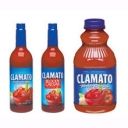
Mixers: Essential To The Good Cocktail
Clam Juice
Club Soda
Cola
Cranberry Juice
Cream or Half & Half
Ginger Ale Juice
Grapefruit juice
Grenadine
Lemon juice
Lemon-lime soda
Lime Juice
Milk
Orange Juice
Pineapple Juice
Soda water
Sweet & Sour mix
Tomato Juice
Tonic water

Garnishes: The Finishing Touches
Angostura bitters
Celery
Cinnamon
Cocktail Onions
Horseradish
Lemons
Limes
Maraschino cherries
Mint
Nutmeg
Olives (green)
Oranges
Pepper
Salt
Sugar
Tabasco sauce
Worcestershire sauce

Essential Bar Equipment
Bartender Manuals: a good book of recipes that describes the techniques needed for mixing, pouring and serving a variety of drinks.
Bar spoon: a long handled spoon used in bartending for mixing and layering of both alcoholic and non-alcoholic mixed drinks. Its length ensures that it can reach to bottom of the tallest jug or tumbler to mix ingredients directly in the glass. A bar spoon holds about 5 millilitres of liquid (the same as a conventional teaspoon). Its long handle is similar to an iced tea spoon but is usually decorative and elegant - some variations mimic large swizzle sticks, with a disc at one end.
Blender: a kitchen appliance used to mix ingredients or puree food. In a bar they are used for blending drinks or crushing ice for frozen drinks. You'll need one with a powerful motor to make sure it can handle crushing ice.
Cocktail Shaker: a device used to mix beverages (usually alcoholic) by shaking. A shaken cocktail is made by putting the desired ingredients (typically fruit juices, syrups, liqueurs and ice cubes) in the cocktail shaker. Then it is shaken heavily for a while, ranging from 5 seconds to 20 seconds, depending on the taste desired. Drinks that are meant to be clear should be stirred and not shaken, as this will result in the drink becoming cloudy.
There are three varieties of cocktail shakers:
- The Boston Shaker: a two-piece shaker consisting of a metal bottom and glass or plastic mixing bowl. A separate strainer is required for this type shaker if crushed ice is used.
- The Cobbler Shaker: a three-piece cocktail shaker that has tapers at the top and ends with a built-in strainer and includes a cap. The cap can often be used as a measure for spirits or other liquids.
- The French Shaker: a two-piece shaker consisting of a metal bottom and a metal cap. It is the least widely known of the three types of shakers. A strainer is always required for this type of shaker.
Ice scoop, tongs, and bucket: an insulated bucket usually with a handle. Get on big enough for all the ice you'll need (think 1 lb. of ice per person.) You'll also need a scoop and tongs for handling the ice.
Jigger: a bartending tool used to measure liquor, which is typically then poured into a cocktail shaker. It is named for the unit of liquid it typically measures, a 1.5 fluid ounce (~44 ml) jigger or shot. However bar jiggers come in other sizes and may not actually measure a fluid jigger. A traditional style of jigger is made of stainless steel with two opposing cones in an hourglass shape on the end of a rod. Typically, one cone measures a fluid jigger and the other 1.0 fl. oz. (~30 ml) pony (shot) or 0.75 fl. oz (~22 ml). Other combinations include 2 fl. oz./1 fl. oz. and 1.75 fl. oz./0.75 fl. oz. combinations. A typical British "jigger" measures 50ml on the larger side, and 25ml on the smaller side. A variation on the double jigger excludes the rod. In the UK, to double, or sometimes even triple the measurable amount of liquor within a cocktail or mixed alcoholic beverage is known as a Geraghty Measure.
Muddler: a bartender's tool, used to "muddle" - or make a mash of - fruits, herbs, and/or spices in the bottom of a glass to release their flavor.
Two popular cocktails that require the use of a muddler are the Mojito made with rum and the Caipirinha made with cachaa.
Strainer: a metal bar accessory used to remove ice from a mixed drink after it has been shaken or stirred and while it is being poured into the glass it will be served in. Strainers are used to cover the mouth of the glass a drink was stirred in or part of the cocktail shaker that it was shaken in. They have holes or slits small enough that only liquid can be poured out.
There are two main types of strainers:
- The Hawthorn strainer: a flat and circular with a handle and several flat stabilizing prongs coming out of the rim. It has a metal spring around its rim that will roll inward slightly to fit inside a glass. The circular rim of the strainer need not be touching the rim of the glass, as the spring inside will filter out the ice.
- The Julep strainer: a concave and circular with a handle, and will fit tightly into a mixing glass when on an angle. The concave part of the strainer is perforated with several dozen small holes.
Waiter's Corkscrew: a sommelier knife or waiter's friend is a corkscrew in a folding body similar to a pocket knife. An arm extends to brace against the lip of the bottle for leverage when removing the cork which is also used to remove bottle caps. A small hinged knife blade is housed in the handle end for removing the foil wrapping the neck of many wine bottles. These are often considered to be the fastest corkscrews.
Extra Equipment
These items are not essential but nice to have especially if you want to get a little fancy with your garnishes and drink service.
- Bowls
Cocktail Toothpicks
Cutting Boards
Juicer
Measuring cup and spoons
Paring Knives
Pitchers
Shot Glasses
Straws
Swizzle Sticks
Tea towels
Bartending Tips
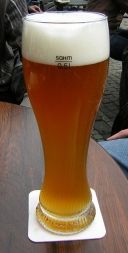
Bareware: Beer Glasses
Beer glassware comprises the drinking vessels made of glass designed or commonly used for drinking beer. Different styles of glassware complement different styles of beer for a variety of reasons, including enhancing aromatic volatiles, showcasing the appearance, and/or having an effect on the beer head. Several kinds of beer glassware have a stem which serves to prevent the warmth of the drinker's hand from warming the beer.
Wheat beer glass
German Weizenbier (wheat beer) glassA wheat beer glass is a glass used to serve wheat beer, known also as Weizenbier or Weibier. The German glass generally holds 500 millilitres with room for foam or "head". It is much taller than a pint glass. It is very narrow at the bottom and slightly wider at the top. In other countries such as Belgium, the glass may be 250 ml or 330 ml. The tall glass provides room for the often thick, fluffy heads produced by the style, which traps aromas and is visually pleasing.
Pint glass
A pint glass is a drinking vessel holding an imperial pint (568 ml ≈1.2 US pints) of liquid and is usually used for beer. Three common shapes of pint glass are found (conical, jug, and flared top), though others are available. Pints are considered good for serving stouts, porters and English ales.
Pilsner glass
A pilsner glass is a glass used to serve many types of light beers, but is intended for its namesake, the pilsner. Pilsner glasses are generally smaller than a pint glass, usually in 250 ml or 330 ml sizes. They are tall, slender and tapered. Wheat beer glasses are often mistakenly referred to as pilsner glasses, but a true pilsner glass has an even taper without curvature. Pilsner glasses are made to showcase the color, effervescence, and clarity of the pilsner, as well as to maintain a nice head.
Beer stein
A beer stein is a traditionally-German beer tankard or mug, made of pewter, silver, wood, porcelain, earthenware or glass; usually with a hinged lid and levered thumblift. The lid was implemented during the age of the Black Plague, to prevent diseased flies from getting into the beer.
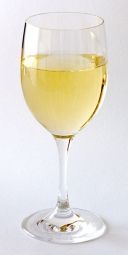
Barware: White Wine Glasses
White wine glasses are generally narrower, although not as narrow as champagne flutes, with somewhat straight or tulip-shaped sides. The narrowness of the white wine glass allows the chilled wine to retain its temperature for two reasons;
The reduced surface area of the glass (in comparison to red wine glasses) means less air circulating around the glass and warming the wine.
The smaller bowl of the glass means less contact between the hand and the glass, and so body heat does not transfer as easily to the wine.
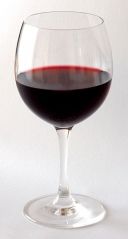
Barware: Red Wine Glass
Glasses for red wine are characterized by their rounder, wider bowl, which gives the wine a chance to breathe. Since most reds are meant to be consumed at room temperature, the wider bowl also allows the wine to cool more quickly after hand contact has warmed it. Red wine glasses can have particular styles of their own, such as:
Bordeaux glass: Tall with a wide bowl, and is designed for full bodied red wines like Cabernet and Merlot as it directs wine to the back of the mouth.
Burgundy glass: Larger than the Bordeaux glass, it has a larger bowl to accumulate aromas of more delicate red wines such as Pinot Noir. This style of glass directs wine to the tip of the tongue.
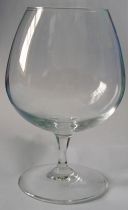
Barware: Brandy Snifter
A snifter -- also called balloon -- is a type of stemware, a short-stemmed glass whose main vessel has a wide bottom that narrows at the top. It is often used to serve brandy. The large surface area helps evaporate the brandy into aroma, while the narrow opening helps to trap the aroma of the drink in the glass. The glass is usually able to hold between 180-240 ml (6-8 oz) but one should pour only 60-90 ml (2-3 oz) at a time.
"Snifter," incidentally, is a British colloquialism for a small amount of alcohol in a glass.
Brandy Snifters

Barware: Champagn Flute
The champagne flte is a stem glass with a tall, narrow bowl. As with other stemware, the stem allows the drinker to hold the glass without affecting the temperature of the drink. The bowl is designed to retain champagne's signature carbonation, by reducing the surface area at the opening of the bowl. The flute has largely replaced the champagne coupe or saucer, the shape of which allowed carbonation to dissipate even more rapidly than from a standard wine glass. Its smaller diameter also allows more flutes to be carried on a tray.
Nucleation in a champagne glass helps form the bubbles seen in champagne. Too much nucleation will cause the carbonation to quickly fizzle out. A smoother surface area will produce fewer bubbles in the glass, and more bubble texture in the taster's mouth.
While most commonly used for sparkling wines, flutes are also used for certain beers, especially Belgian lambic and gueuze, which are brewed with wild yeast and often fruited. The tart flavor of these beers, coupled with their carbonation, makes them similar to sparkling white wines, and the champagne flute an ideal choice of glassware.
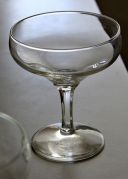
Barware: Champagn Coupe
The champagne coupe or champagne saucer is the saucer-shaped stem glass once used for serving champagne, but now more commonly used for certain cocktails. Legend has it the shape of the glass was modeled on the breast of Marie Antoinette, Josphine de Beauharnais, Madame de Pompadour, or one of several other French aristocrats, although this is almost certainly apocryphal. The glass was designed especially for champagne in England in 1663, preceding those aristocrats by almost a century.
Drink Mixing Videos
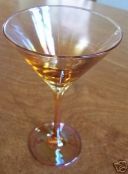
Barware: Cocktail Glass
A cocktail glass, martini glass, or champagne glass, or stem cocktail glass, is a drinking glass with a cone-shaped bowl (the tip of the cone forming approximately a 90 degree angle in the cross section) on a stem above a flat base, used to serve a cocktail or champagne. As with other stemware, the stem allows the drinker to hold the glass without affecting the temperature of the drink.
One variation is the double martini glass which is taller and wider at the opening than a standard martini glass. Another variation is a Stub glass, which is identical to the martini glass, except that the base is attached directly to the bowl, removing the fragile stem.
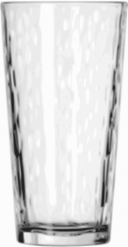
Barware: Collins Glass
A Collins glass is a glass tumbler, holding 240 to 350 ml(8-12 fluid ounces), used to serve a mixed drink, especially the Tom Collins for which it is named. The Collins glass is somewhat narrower, and holds less than the similar highball glass.
Collins Glasses
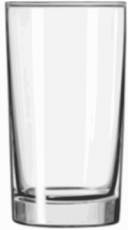
Barware: Highball Glass
A highball glass is a glass tumbler, holding between 8 and 12 fluid ounces (240 to 350 mL), used to serve a mixed drink, or highball. The highball glass is taller than an Old-Fashioned glass, and shorter than a Collins glass.
Highball Glasses
Mixology Videos
Drink Books




Barware: Rocks Glass
The Old-Fashioned glass, rocks glass, or "lowball", is a short tumbler used for serving liquor "on the rocks", meaning over ice, or cocktails having few ingredients. It is named after the Old fashioned cocktail, traditionally served in such a glass.
Contemporary American "Old-Fashioned" and "rocks" glasses may hold as much as 8-12 fluid ounces (22-34 cL), and may be used to serve a wide variety of beverages over ice, such as whisky.
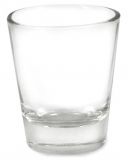
Barware: Shot Glass
A shot glass is a small glass designed to hold or measure liquor, to be poured into a mixed drink, or drunk straight from the glass (a "shot"). The modern thick-walled shot glass probably originated in the United States during the Prohibition era, and the term "shot glass" or "shotglass" first appeared in print in the 1940s.
Jigger or pony is an earlier name for a container used to measure or drink a standard quantity of liquor. A small glass holding a shot of liquor is called a whiskey. American distilleries distributed thin whiskey glasses bearing etched advertising between the late 19th century and the beginning of Prohibition. Shot glasses decorated with a wide variety of advertising, humorous pictures, and toasts are popular souvenirs and collectibles. Pre-prohibition whiskey glasses are also highly collectible.
In Italy, the shot glass has been used for over 200 years, very popular in taverns for tasting grappa. Contrary to public opinion, grappa is sipped from the shot glass, not downed in one gulp.
Shot Glasses
What do you keep always at hand? Do you have favorite brands of alcohol?















